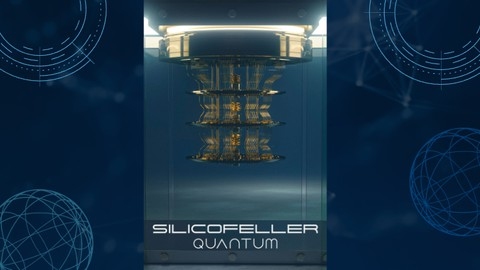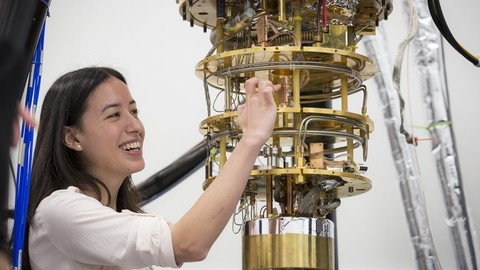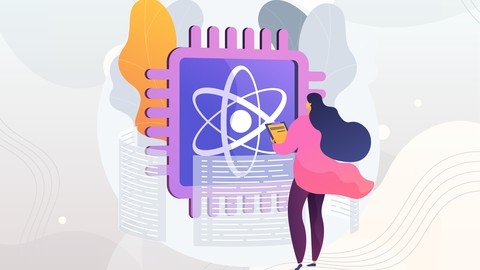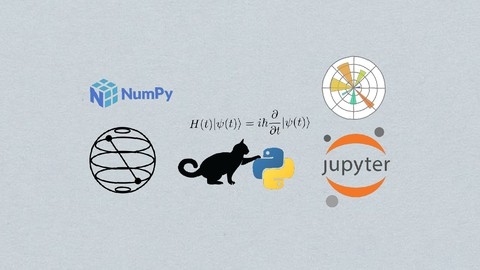Quantum computing is a rapidly evolving field with the potential to revolutionize various industries.
By harnessing the power of quantum mechanics, quantum computers can solve complex problems that are intractable for classical computers, opening up new possibilities in areas such as medicine, materials science, and artificial intelligence.
Learning Qiskit, an open-source quantum computing framework developed by IBM, allows you to delve into this fascinating realm and explore the potential of quantum algorithms and applications.
With the growing interest in quantum computing, finding a comprehensive and engaging Qiskit course can be challenging.
You want a course that provides a solid foundation in quantum computing principles, hands-on experience with Qiskit, and the ability to implement and experiment with quantum algorithms.
Sifting through the numerous options available can be overwhelming, leaving you unsure of where to begin your quantum computing journey.
Based on our thorough analysis, we believe the Beginners guide: Practical Quantum Computing with IBM Qiskit course on Udemy is the best overall choice for learning Qiskit.
This course provides a strong foundation in the core concepts of quantum computing, guides you through the implementation of quantum gates using Qiskit, and introduces you to practical applications like the Deutsch-Jozsa algorithm and quantum cryptography.
It’s a perfect starting point for anyone eager to explore the world of quantum computing with Qiskit.
While this is our top recommendation, there are other excellent Qiskit courses on Udemy that cater to different learning styles and levels of expertise.
Read on to explore our curated list of top Qiskit courses, each with its own strengths and focus areas.
We’re confident you’ll find the perfect course to embark on your exciting journey into the world of quantum computing with Qiskit.
Beginners guide: Practical Quantum Computing with IBM Qiskit
This course provides a solid foundation in the fundamental concepts of quantum computing, making it an excellent starting point for anyone interested in exploring this fascinating field.
You’ll begin by understanding the difference between classical bits and quantum qubits, and how to create, retain, and read out these qubits using the powerful Qiskit framework.
The course effectively guides you through the core of quantum computing, introducing you to various quantum gates, such as the Pauli X-gate, the Hadamard Gate, and the CNOT gate.
You’ll even have the opportunity to implement these gates on a real IBM quantum computer, providing a practical and engaging learning experience.
Moving beyond the basics, you’ll delve into multi-qubit states and how to represent them through circuits.
You’ll learn to construct circuits using single-qubit gates and explore different scenarios involving the CNOT gate.
You’ll also gain familiarity with other important circuits like the CZ, CY, SWAP, and Toffoli circuits, building a comprehensive understanding of quantum circuit design.
The course doesn’t shy away from practical applications.
You’ll examine the Deutsch-Jozsa (DJ) problem, a classic example showcasing the power of quantum algorithms.
You’ll also learn about quantum cryptography, specifically Quantum Key Distribution, and quantum teleportation, highlighting the potential of quantum computing to revolutionize various fields.
While the course offers a strong foundation, it’s worth noting that it focuses primarily on theoretical concepts and implementation on simulated quantum computers.
If you’re looking for a deep dive into advanced quantum algorithms or real-world applications beyond the introductory level, additional learning resources may be necessary.
Quantum Computing with Qiskit Ultimate Masterclass
If you’re seeking a starting point for this complex field, this course provides a solid foundation from the fundamentals of classical computing to advanced algorithms like Shor’s.
You’ll begin by exploring the limitations of classical computing, setting the stage for the power of quantum computing.
You’ll encounter crucial concepts like superposition and entanglement, and learn about the building blocks of quantum computing, including qubits, the Bloch sphere, and various quantum gates.
The course then delves into the mathematical underpinnings of quantum computing, including linear algebra, trigonometry, and complex numbers.
This foundation will be essential for understanding quantum mechanics and manipulating qubits.
The course leverages IBM Qiskit, a powerful open-source framework, to teach you practical skills in building and running quantum circuits.
You’ll even have the opportunity to experiment with simulating quantum teleportation and superdense coding, bringing these concepts to life.
Moving on to quantum algorithms, you’ll learn to implement Deutsch’s, Bernstein-Vazirani, Simon’s, and Grover’s algorithms.
These algorithms demonstrate the potential of quantum computers to tackle problems intractable for their classical counterparts.
You’ll gain a thorough understanding of the quantum Fourier transform and its applications in quantum algorithms, including Shor’s algorithm, which is crucial for breaking modern encryption.
While the course offers a robust foundation in quantum computing, keep in mind that this is an introductory course.
For those seeking more advanced applications or in-depth exploration of specific algorithms, further study will be necessary.
This course provides a strong springboard into the field of quantum computing, equipping you with the knowledge and skills to delve deeper into this rapidly evolving area.
Quantum Computing in Python using Qiskit
You’ll start by building a strong understanding of complex numbers and their role in representing quantum states, followed by a thorough exploration of linear algebra, a crucial tool for manipulating quantum information.
Get ready to embrace the theoretical minimum of quantum computing, delving into Dirac notation, the essential building blocks of qubits, and the intriguing Bloch sphere, a powerful visual representation of quantum states.
You’ll learn to calculate probabilities, grasp the concept of global phase, and even explore the density matrix, a valuable tool for describing complex quantum systems.
The course then transitions smoothly into the practical world of quantum computing, introducing you to Qiskit, a Python library designed specifically for building and running quantum circuits.
You’ll learn to implement a wide range of single-qubit gates, including the foundational Pauli gates and rotation gates, and explore the techniques for controlling multiple qubits.
Beyond the basics, you’ll venture into exciting topics like quantum communication protocols.
Explore teleportation, superdense coding, and the BB84 protocol, all of which showcase the potential of quantum mechanics to revolutionize communication.
You’ll then delve into powerful quantum algorithms such as the Deutsch-Jozsa and Bernstein-Vazirani algorithms, which demonstrate the potential of quantum computing to solve certain problems far more efficiently than classical computers.
The course culminates with a deep exploration of Shor’s algorithm, a revolutionary algorithm with the potential to break modern encryption methods.
You’ll gain a comprehensive understanding of its inner workings and learn to implement it using Qiskit.
This course provides a well-rounded experience, equipping you with the theoretical foundation and practical skills needed to confidently explore the fascinating world of quantum computing.
Introduction to Quantum Computing using Qiskit
This course stats by equipping you with the mathematical foundation needed to grasp quantum computing concepts.
You will discover the world of qubits and how they differ from classical bits.
The course then introduces you to IBM Quantum Composer, a tool that allows you to visually build quantum circuits and understand how single and multi-qubit gates manipulate qubits.
You will then explore Qiskit, a powerful Python library developed by IBM for quantum programming.
Using Qiskit, you’ll learn to create and run quantum algorithms.
You’ll delve into different types of quantum states and learn how to program various gates, including single and multi-qubit gates, control gates, and phase gates, essential for building more complex circuits.
The course explains the Born Rule, which helps you understand how to measure the results of a quantum computation.
You’ll also learn about quantum entanglement, a unique phenomenon where qubits become interconnected.
Finally, you’ll explore unitary representations and Bell states, important concepts in quantum information theory.
The course concludes by teaching you how to use rotation gates for precise qubit manipulation and the barrier function for controlling the order of quantum operations within a circuit.




